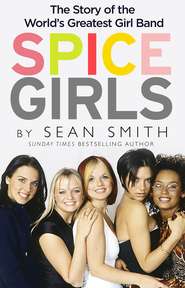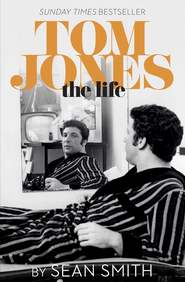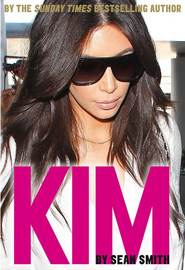По всем вопросам обращайтесь на: info@litportal.ru
(©) 2003-2024.
✖
Ed Sheeran
Настройки чтения
Размер шрифта
Высота строк
Поля
Stephen shared his wife’s artistic passions, for opera in particular. In Who’s Who he declares, amusingly, his recreations as ‘reading reviews of operas I can’t afford to see’ and ‘avoiding operas whose producers know better than the composer’. For many years he has been a popular volunteer at the Britten-Pears Foundation library in his beloved Aldeburgh.
Although Ed was close to his grandparents, he never knew his Uncle Adam. He had been fatally wounded at his home in Alleyn Crescent, Dulwich, two weeks after Matthew’s birth in March 1989. The local newspaper, the South London Press, described the distressing circumstances under the stark headline ‘Man Shoots Himself’.
Adam, an investment manager in the City, shot himself twice with a shotgun he used for clay-pigeon shooting. According to the paper, he left his girlfriend asleep upstairs at about 4 a.m. one Friday morning while he let himself into the garage. There, he sat in an old armchair and turned the gun on himself. The first bullet pierced his left shoulder. He then reloaded and shot himself a second time.
Adam died two hours later in King’s College Hospital, Camberwell. He was thirty-one. The death certificate was issued by the Inner South District coroner Montagu Levine after an inquest in June. He listed the cause of death as ‘Gunshot Wound to Head and Chest. He killed himself’.
On the first anniversary of his death, in 1990, a dignified notice appeared in the In Memoriam column of The Times, remembering Adam Timothy Southwick Lock and quoting Tennyson:
But trust that those we call the dead
Are breathers of an ampler day
For ever nobler ends.
The poet wrote his monumental elegy In Memoriam, also known as In Memoriam A.H.H., as a tribute to his friend Arthur Henry Hallam, who had died tragically young from a brain haemorrhage. The most often quoted lines are: ‘’Tis better to have loved and lost than never to have loved at all.’ Tennyson took seventeen years to write his masterpiece as he struggled to deal with the effects of sudden bereavement.
In March 1991, when Ed was six weeks old, the same notice appeared again in The Times. In 1995, without fuss, a painting was adopted in memory of Adam Lock at the Dulwich Picture Gallery. The peaceful work by the seventeenth-century Dutch artist Adriaen van Ostade is an oil on panel entitled simply ‘Interior of a Cottage.’ Adam would not be forgotten.
Ed’s grandparents’ love of music rubbed off on his mother, Imogen, who has a lovely voice and has been a mainstay of her church choir for many years. Ed, however, has never shared the family’s enthusiasm for classical music, unlike his brother Matthew, who had an obvious talent for it from an early age.
Ed enjoyed musical instruments, though. In his first classroom there was a musical bar where the children could help themselves to drums, recorders and other instruments and make as much noise as they liked. Ed loved this – much more than sport, for which he never had much of a taste.
By the time Ed began school, his birthmark had been successfully treated by laser but he was painfully shy, with a pronounced stammer. He later revealed that it was a result of one of his laser treatments, when the technicians forgot to administer the anaesthetic cream. Although the two brothers started at Heathfield Junior School at the same time, they were in separate classes because of the difference in age. Matthew, who was much more confident, never fussed around his younger brother but he was always there if Ed needed him.
Ed began in Reception, the infants’ class. The teaching assistant, Gillian Sunderland, remembers that the two brothers had very contrasting personalities, with Ed being by far the quieter: ‘He was rather nervy. He wasn’t needy in the sense of needing looking after but he was extremely shy. Extremely shy! He found mixing with other children rather challenging so he needed to be encouraged to mix really. He had a slight stutter but it was noticeable and I think he probably struggled with that.’
Looking back, Ed recalled that he had a ‘really, really bad stammer’. His own memories confirm that, as a little boy, he found it difficult to join in. He told Kirsty Young on Desert Island Discs that he was a bit of a weird kid: ‘I lacked an eardrum so I couldn’t go swimming – which helps get friends.’
Heathfield is a private co-educational school in the small village of Rishworth, a ten-mile drive from Hebden Bridge down demanding country lanes, but it was worth it for the idyllic setting. Heathfield and its senior equivalent, Rishworth School, occupy 130 acres. The youngsters could spend much of the summer outdoors, playing and being taught in the open air. Gillian explains, ‘There are other schools but if you want your child to enjoy the environment then you would choose here.’
While Ed would learn the basics of English, maths and phonics, much of the teaching at the school revolved around being creative. A small river ran through the grounds and the class would be taken down to look at the water and were encouraged to write a little story about it or perhaps draw a picture. Ed particularly liked to sit outside quietly and draw with his crayons.
The teachers liked Edward, as everyone called him at school, because he was such a gentle boy. While he was small for his age, he stood out with his bright ginger hair and big round glasses. ‘He wasn’t the type of boy who liked fuss, though,’ recalls Gillian. ‘He was very much a “Let’s get on with it” type. He wasn’t in need of stroking all the time.’
In the well-known photograph of young Ed in his burgundy-coloured school blazer and grey shorts he is wearing the Heathfield uniform. Throughout his childhood he was fortunate in that his parents were sociable, and popular with other parents and teachers. Gillian observes, ‘They were the type of people that you don’t forget because they were lovely – so genuine and very supportive and caring.’
When it came time for the Sheeran boys to move on because the family were relocating to Suffolk, Imogen presented Gillian Sunderland and form teacher Christine Taylor with a thank-you card – a pencil drawing of her two sons.
Growing up, Ed and Matthew were the subject of many works of art. One important creative decision that Ed’s parents made was to commission paintings, sculpture and lihographs of their children so that there would be a lasting record of their early lives. As a result, there is a superb archive of them, not just sentimental camcorder shots. A further consequence of their foresight is that Ed has always been entirely comfortable posing for camera or paintbrush, and thousands of pictures of him are in circulation. Imogen’s thoughtful gift ensured the boys would not be forgotten at Heathfield. One of the key reasons for their departure was the discovery that Matthew – not Ed – had considerable musical talent. He was showing potential as a treble soloist and there were greater opportunities for a boy soprano in Suffolk, near his grandparents in Aldeburgh and at St Edmundsbury Cathedral in Bury St Edmunds.
Imogen let slip why they were moving when she showed potential buyers around the house in Birchcliffe Road. Eventually it was bought by a local vet, Clare Wright, who was in awe of the art scattered throughout their home. She recalls, ‘There was wonderful, beautiful artwork everywhere.’ Every inch of wall seemed to have a painting hung on it, making the walls look bare when she moved in just before Christmas in 1995, when the family had left with their artworks. Ed was nearly five.
The Sheerans did, however, leave behind the piano, which also features in the ‘Photograph’ video, with Ed attempting to play it. Pianos are notoriously difficult to move and this was no Steinway, so it stayed put in the front room.
Eventually, Clare decided to give it away and, consequently, Ed Sheeran’s first piano moved ten miles down the Burnley road to the Elland Working Men’s Club. The family would need a new one when they moved into their next home in the Suffolk market town of Framlingham.
2
Pugilism not Vandalism (#ulink_60475a82-87b0-5935-a166-a7154b5e7ddf)
One item of furniture that was not on the removal firm’s inventory was a television. The Sheerans didn’t own one. Imogen and John were keen that their two boys should not become little couch potatoes. Theirs was an artistic household and they wanted the children to develop their creative nature in the important early years. It was a policy that would pay off handsomely.
Ed would later moan, tongue in cheek, that when they did eventually get a television, all they were allowed to watch was a box set of David Attenborough’s Life on Earth. They didn’t own a TV licence so it was videos or nothing. Nevertheless, Ed formed a lifelong appreciation of Attenborough and his standing as a true national treasure. ‘I was a massive fan,’ he admitted.
Imogen and John were very strict where TV was concerned. Edward and Matthew were allowed to watch one video each evening before they were directed to more meaningful play. Ed enjoyed Pingu, the long-running animated series about a family of penguins at the South Pole. When he was seven, he liked The Land Before Time, the classic animated feature film about the adventures of a family of dinosaurs.
After their viewing allowance, they were encouraged to draw or paint or, in Ed’s case, build with Lego. He loved it, and those happy hours spent as a child would benefit him later when he needed to apply himself patiently to constructing a song. Even as an adult, Lego was comforting.
His mother and father finally weakened and bought a TV licence when Ed was nine. He wondered what all the fuss was about until he discovered The Simpsons – but it was shown at 6 p.m. and clashed with choir practice on a Friday evening. Ed’s heart wasn’t in that musical activity. One regular churchgoer still smiles when she remembers the two Sheeran boys scampering out of the Sunday service at St Michael’s almost before the organist had played the last notes of the final hymn. Their mother’s continued support for the choir, on the other hand, was much appreciated locally: ‘You can tell when she’s singing,’ observes one member of the congregation.
Ed nagged his parents to let him off singing in the church choir. Eventually, they agreed on the understanding that he joined his school choir instead. He was now a pupil at Brandeston Hall, which was in a beautiful location that could rival that of his first school in Yorkshire. The imposing stately hall is at the heart of the village of Brandeston, about four miles south of Framlingham. From its position next to the River Deben, the views across the water meadows would inspire any painter.
The hall was destroyed by fire in 1847 but was rebuilt as an almost exact replica of the Tudor original. It became the prep school for Framlingham College in 1949, and still has the stopped-in-time quality that J. K. Rowling might have imagined for her Harry Potter stories. At Brandeston Hall, Ed came out of his shell. He made a best friend called James Mee and the two boys would take it in turns to go to each other’s houses after school.
James did not have the same television restrictions and it was at his house that Ed was introduced to The Simpsons. He also tasted meat for the first time. Imogen had been keen to start her sons on a healthy diet so the household was vegetarian for a few years. Ed was somewhat taken aback when he sat down for tea in James’s kitchen and was presented with a hearty plate of bangers and mash. He told his friend’s mum, ‘These are the best sausages I’ve ever eaten’, which was true, as he had never tried them before.
From then on, sausages would become a particular favourite. Imogen’s full English fry-ups were a sought-after breakfast when they had friends or visiting musicians to stay. The Sheerans soon became popular hosts in Framlingham, or ‘Fram’, as it’s known locally. Their sociability and ease in company contributed to their younger son’s cautiously growing confidence.
Everything about the market town of Framlingham was cosy – a picture postcard of old England, steeped in history. It was compact, easy to get around and surrounded by delightful countryside. An added bonus was that it was only fourteen miles to the coast where Imogen’s parents lived in Aldeburgh. The drive to Ipswich station to catch the train to London, a journey Ed would become very familiar with over the years, took forty minutes on a good day.
Just like Hebden Bridge, Framlingham has a strong sense of community, with traditional local pubs, independent shops and higgledy-piggledy streets full of the pink cottages so representative of the heart of Suffolk. On any day in the Market Square, the hub of the place, you are likely to see at least six people you know.
The cream-tea atmosphere of the present hardly matches the town’s colourful and somewhat violent past. Framlingham Castle was the seat of the earls and dukes of Norfolk until it passed to Henry VIII’s daughter Mary – ‘Bloody Mary’, as she was known. This was where she gathered her troops before she was proclaimed Queen of England and marched to London to take her throne in the summer of 1553.
The castle was a short walk from the new family home, a spacious detached house, which they bought for the relatively bargain price of £125,000. Today it would cost you £600,000. Ed had his own bedroom and a new piano was installed downstairs in one of the reception rooms at the back, which was perfect for entertaining.
In pride of place amid all the artwork the Sheerans continued to acquire, there were framed photographs of the two boys meeting the Prince of Wales. The family’s association with Prince Charles represented the pinnacle to date of John Sheeran’s career as a curator of prestigious exhibitions. He was appointed to organise and co-ordinate the prince’s fiftieth-birthday exhibition, in 1998. Entitled ‘Travels with the Prince’, it celebrated his work as a watercolourist. It included paintings by contemporary artists such as Emma Sergeant, Derek Hill and Susannah Fiennes, cousin of the Oscar-winning actor Ralph Fiennes. The artists had been specially chosen to accompany Charles on his tours abroad.
The exhibition at the Cartoon Gallery in Hampton Court Palace, in Surrey, proved a big success. With little fuss, Prince Charles has become one of the UK’s most successful artists, whose paintings have raised millions for the Prince of Wales Charitable Foundation. The deal for the travelling artists was that their trip was paid for, the prince had first choice of their paintings and, subsequently, they were free to sell their own work. It was a formula that worked exceptionally well.
Sheeran Lock produced a sumptuous book to accompany the exhibition, in which Imogen wrote the preface and John the text. It was part of a golden period for the couple as John’s star continued to rise. In 2003, he was commissioned by the then President of Nigeria, Olusegun Obasanjo, to curate a special show of present-day Nigerian art in Abuja where the Commonwealth heads of government were meeting. The exhibition included a ground-breaking art-education project for young people from all regions of Nigeria. John and Imogen were inspired by that success to devise other programmes to help disadvantaged young people in the UK. Their philosophy was simple – nobody should be excluded from appreciating art and participating in it.
Ed was shielded from hardship in Framlingham and settled in well to life at a gentle Suffolk pace. The family had a more lively time on their frequent trips to Ireland to visit John’s parents in County Wexford. John is one of eight children – five boys and three girls including his twin sister, Mary Anne – which meant Ed had cousins all over the country. The Sheerans are a large close-knit clan: Ed has always been aware of the importance of family, and has often sung about it. Despite John being born in South London, the Sheerans were very much an Irish clan so Ireland and its music have had a profound influence on Ed’s life.
Ed’s grandfather, Bill Sheeran, was born in Magera, a small town in Londonderry, Northern Ireland. He grew up in the East End of London after his father, James, became a local doctor in Bow. James, who was Ed’s great-grandfather, was reputedly a decent boxer and family legend has it that he once fought the great heavyweight champion Jack Johnson in an exhibition bout in 1913. After a spell of bullying at school when Bill was spotted carrying his violin case, his father had enrolled him in a boxing club and taken him to local tournaments, which had led to a lifelong love of the sport. In a similar way, Ed’s love of music was enhanced by joining his own father for evenings out at pop concerts.
During the Second World War, Bill Sheeran boxed for his school, Epsom College, then trained as a dentist at Guy’s Hospital in Southwark. He continued his love affair with the noble art and became captain of the hospital’s boxing club, where he was trained by Matt Wells, a former world welterweight champion. One of Bill’s favourite jokes was that the hospital’s motto, Dare Quam Accipere, was perfect for boxers. More familiarly translated, this means, ‘[It is better] to give than to receive.’
While studying at Guy’s, Bill took on his most infamous bout – against Charlie Kray, the elder brother of the notorious gangsters, Ronnie and Reggie. Expert opinion gave Bill no chance. Walter Bartleman, boxing correspondent of the old London evening paper the Star, and later the Evening Standard, told him before the fight, ‘He’ll eat you.’ It didn’t work out like that: Bill won the bout on a stoppage when Charlie was unable to continue.
Bill met his future wife Anne Mulligan at Guy’s where she worked as a nurse. She had been raised on a farm near Gorey, a small town in County Wexford, about sixty miles south of Dublin. Ed romanticised their story on his ÷ album. The track ‘Nancy Mulligan’, a traditional Irish jig, describes how theirs was a Romeo and Juliet story. In Ed’s tribute to his grandparents, he highlights the religious divide between a Protestant boy from Northern Ireland and a Catholic girl from the Republic. Her father, according to the song, did not approve of their marriage. He relates their love affair from Bill’s point of view and would later explain, ‘They got married and no one turned up to the wedding. He melted all his gold teeth in his dental surgery and turned them into a wedding ring.’
Exactly how much of the story is true and how much is artistic licence is a guessing game that fans can play with the majority of Ed’s songs. He takes a genuine fact or feeling as a starting point and develops it into a song that resonates with every listener. Everyone has their own stories of love and can relate to the observation that Bill had never seen ‘such beauty before’ when he met his future wife. Fortunately the song met with a thumbs-up from his gran, although she was very modest about it: ‘Oh, it’s fine as long as I’m not there while he’s playing it!’
In real life, Bill and Anne married in 1951 and settled in South Norwood, an area of London south of the River Thames, which seems slightly less glamorous than the ‘Wexford border’ Ed sings about.
Bill’s second love – after his family – remained boxing while he built a thriving dental practice. When his own boxing days had passed, he became more involved in the administration of the sport as a respected steward. A popular figure, he was in charge of many of the biggest nights in British boxing and was on good terms with the sport’s then best-known names, including Muhammad Ali, Henry Cooper and, Ireland’s finest, Barry McGuigan.










